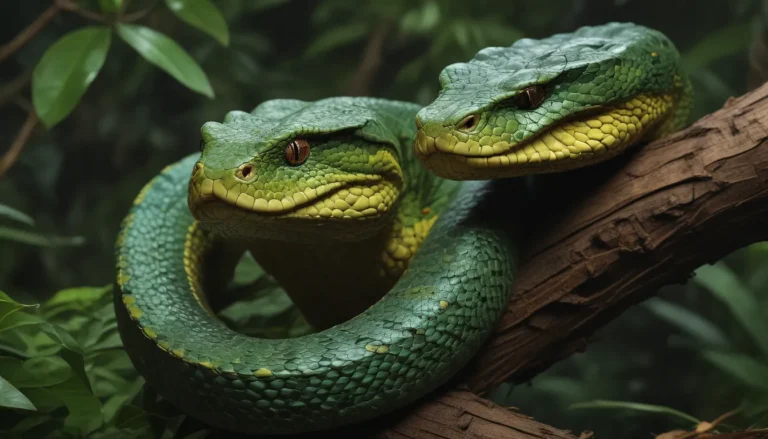The pictures we use in our articles might not show exactly what the words say. We choose these pictures to make you interested in reading more. The pictures work together with the words but don’t take their place. The words still tell you the important facts.
The frigatebird is a captivating creature renowned for its exceptional aerial skills and unique appearance. With their elegant wings, forked tails, and striking black plumage, frigatebirds are a mesmerizing sight to behold in tropical and subtropical regions across the globe. Bird enthusiasts and nature lovers alike are drawn to these remarkable birds, intrigued by their fascinating traits and behaviors. In this article, we will uncover 13 intriguing facts about frigatebirds that will deepen your appreciation for these incredible avian species. From their extraordinary flight capabilities to their distinct breeding habits, there is much to uncover about the enchanting world of frigatebirds.
The Frigatebird’s Mastery of the Skies
Often referred to as the "Pirate of the Air," the frigatebird holds an esteemed position in the realm of avian royalty, reigning supreme in the skies with its awe-inspiring wingspan and majestic soaring prowess.
Wingspan Wonder: Largest in Proportion to Body Size
One of the most captivating facts about the frigatebird is its possession of the largest wingspan-to-body size ratio among all bird species. With wings stretching up to 7.5 feet, these magnificent birds effortlessly glide through the air for extended periods, showcasing a remarkable display of aerodynamic grace.
Flight Adaptations: Sleek Wings for Effortless Soaring
Equipped with elongated, slender wings, the frigatebird exemplifies flight efficiency as it gracefully soars through the heavens for prolonged durations. These wings, coupled with its lightweight physique, empower the frigatebird to traverse vast distances with remarkable ease and agility.
Skilled Fishermen of the Sky
Adept at hunting on the wing, frigatebirds display remarkable skill in capturing fish while in flight. Employing a specialized hunting technique, they hover above the water's surface, deftly seizing their prey with precision and finesse.
- Frigatebirds are proficient at catching fish mid-flight.
- They employ a hovering technique to snatch prey from the water's surface with accuracy.
- In addition to fish, frigatebirds scavenge and pilfer food from other avian species.
High-Flying Marvels: Days in the Air
Frigatebirds possess a remarkable ability to remain airborne for extensive periods, a testament to their efficient flying techniques and specialized adaptations. These avian wonders only land on solid ground or perches when necessary for nesting or breeding purposes.
The Brilliant Red Throat Pouch
During mating season, male frigatebirds showcase a vibrant red throat pouch that becomes inflated to attract potential mates. This visually striking feature, juxtaposed against their dark plumage, serves as a captivating emblem of courtship prowess.
Nesting Nurturers: One Egg at a Time
Female frigatebirds typically lay a single egg at a time, with both parents sharing the responsibilities of incubation. The eggs, characterized by their large, white appearance, require approximately two months to hatch, heralding the arrival of new frigatebird offspring.
- Female frigatebirds lay one egg per nesting cycle.
- Both male and female parents take turns incubating the egg.
- The incubation period lasts approximately two months before hatching.
Navigation Maestros: Mastering the Oceanic Expanse
Bolstered by an extraordinary sense of navigation, frigatebirds embark on extensive journeys across the ocean, traversing vast distances with precision and accuracy. Their navigational prowess relies on a mix of celestial cues, magnetic fields, and landmarks, guiding them through the boundless expanse of the open sea.
Aerial Adolescence: Fledging the Nest
Upon hatching, frigatebird chicks are entirely reliant on parental care for nourishment and protection. The fledgling process can span up to six months as the chicks gradually develop their flight feathers, culminating in their readiness to venture out into the world beyond the nest.
- Newly hatched frigatebird chicks depend on parental care for survival.
- It can take up to six months for chicks to grow and acquire flight capabilities.
- Fledglings venture out into the world once they have developed their flight feathers.
Captivating Spectacle: Aerial Acrobatics
Celebrated for their mesmerizing aerial displays, frigatebirds showcase intricate maneuvers and soaring feats that captivate onlookers with their grace and precision. Their acrobatic prowess serves as a testament to their mastery of the skies.
Tropical Treasures: Habitat and Distribution
Frigatebirds are predominantly found in tropical and subtropical regions worldwide, inhabiting locales such as the Caribbean, Pacific Islands, and coastal regions of Africa and South America. These avian wonders are finely attuned to warm, coastal environments that encompass their natural habitats.
Courtship Choreography: A Unique Mating Ritual
During the mating season, male frigatebirds engage in elaborate courtship displays to attract potential mates. Inflating their vivid red throat pouches, unfurling their wings, and emitting distinctive calls, male frigatebirds vie for dominance and the attention of female counterparts.
Unveiling the Enigmatic Frigatebird
In conclusion, frigatebirds stand as captivating ambassadors of avian diversity, embodying a tapestry of remarkable traits and behaviors that enchant and inspire observers worldwide. From their majestic wingspan to their distinctive courtship rituals, frigatebirds offer unique insights into the fascinating world of seabirds and their oceanic habitats.
Frequently Asked Questions
Q: How large are frigatebirds?
A: Frigatebirds boast an impressive wingspan that can span up to 8 feet (2.4 meters) in certain species.
Q: What do frigatebirds eat?
A: Frigatebirds are carnivorous creatures that primarily prey on fish, squid, and other small marine organisms, exhibiting adept hunting skills in flight.
Q: How long do frigatebirds live?
A: With a relatively long lifespan compared to other avian species, frigatebirds can thrive for up to 25 years in their natural habitats.
Q: Where are frigatebirds commonly found?
A: Frigatebirds thrive in tropical and subtropical regions across the globe, frequenting locales such as the Caribbean, Galapagos Islands, and the coastal expanses of the Indian and Pacific Oceans.
Q: Do frigatebirds face natural predators?
A: While adult frigatebirds boast few natural predators owing to their size and aerial agility, their eggs and fledgling chicks are susceptible to predation by avian predators like gulls and raptors.
Q: How do frigatebirds attract mates?
A: Male frigatebirds employ their flashy red throat pouches, known as gular sacs, to attract potential mates during courtship displays, showcasing dominance and courtship prowess.
Q: Are frigatebirds social birds?
A: While primarily solitary in nature, frigatebirds congregate in large colonies during the breeding season. Outside of breeding periods, they engage in solitary activities like flying and hunting.
Explore the Wonder of Nature
Embark on a journey of discovery as you delve into the rich tapestry of wildlife wonders that encompass our natural world. From majestic mammals to diminutive insects, the realm of nature beckons with stories of resilience, adaptation, and beauty. Dive into the vibrant ecosystems of tropical regions, where diverse creatures thrive in harmony with their surroundings. Unravel the mysteries of seabirds, masters of the sky and sea, each adorned with unique adaptations and captivating behaviors. Whether you harbor a passion for nature or simply seek to unravel the marvels of the world around you, there is always more to learn and appreciate in the boundless expanse of life on Earth.
Your Exploration Awaits
At the heart of our content lies a commitment to delivering engaging and trustworthy information that inspires and educates. Each fact shared on our platform emanates from real users like you, contributing a wealth of diverse insights and knowledge. Our dedicated editors meticulously review each submission to uphold the highest standards of accuracy and reliability, ensuring that the facts presented are not only enthralling but also credible. Trust in our dedication to quality and authenticity as you embark on a journey of exploration and discovery with us.
With a renewed appreciation for the captivating frigatebird and the vast array of wonders that populate our natural world, let curiosity guide you as you unravel the intricate tapestry of life on Earth.






